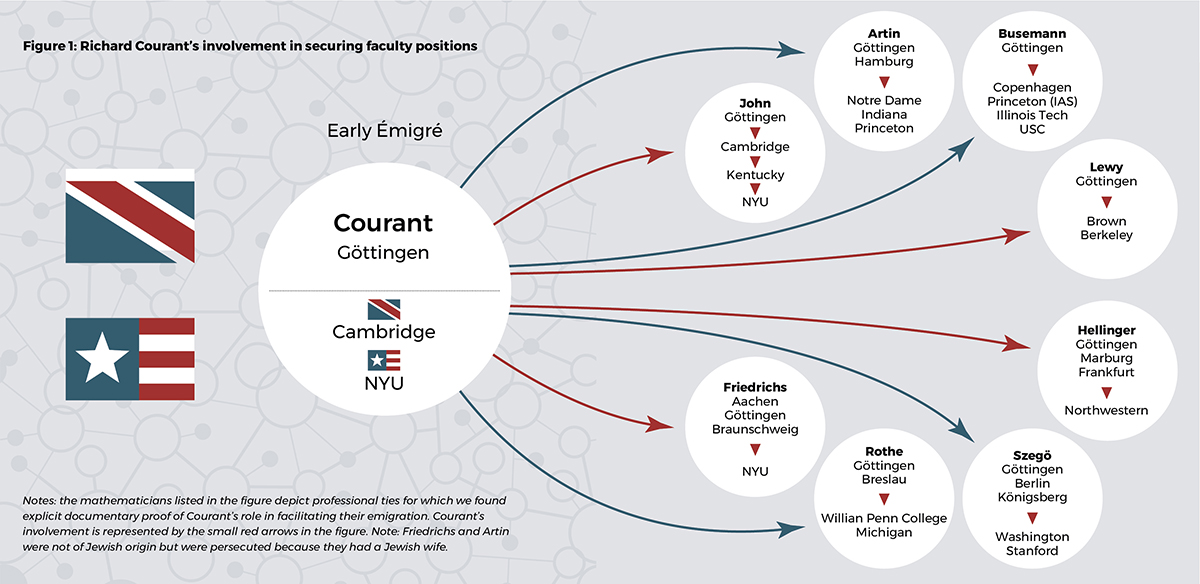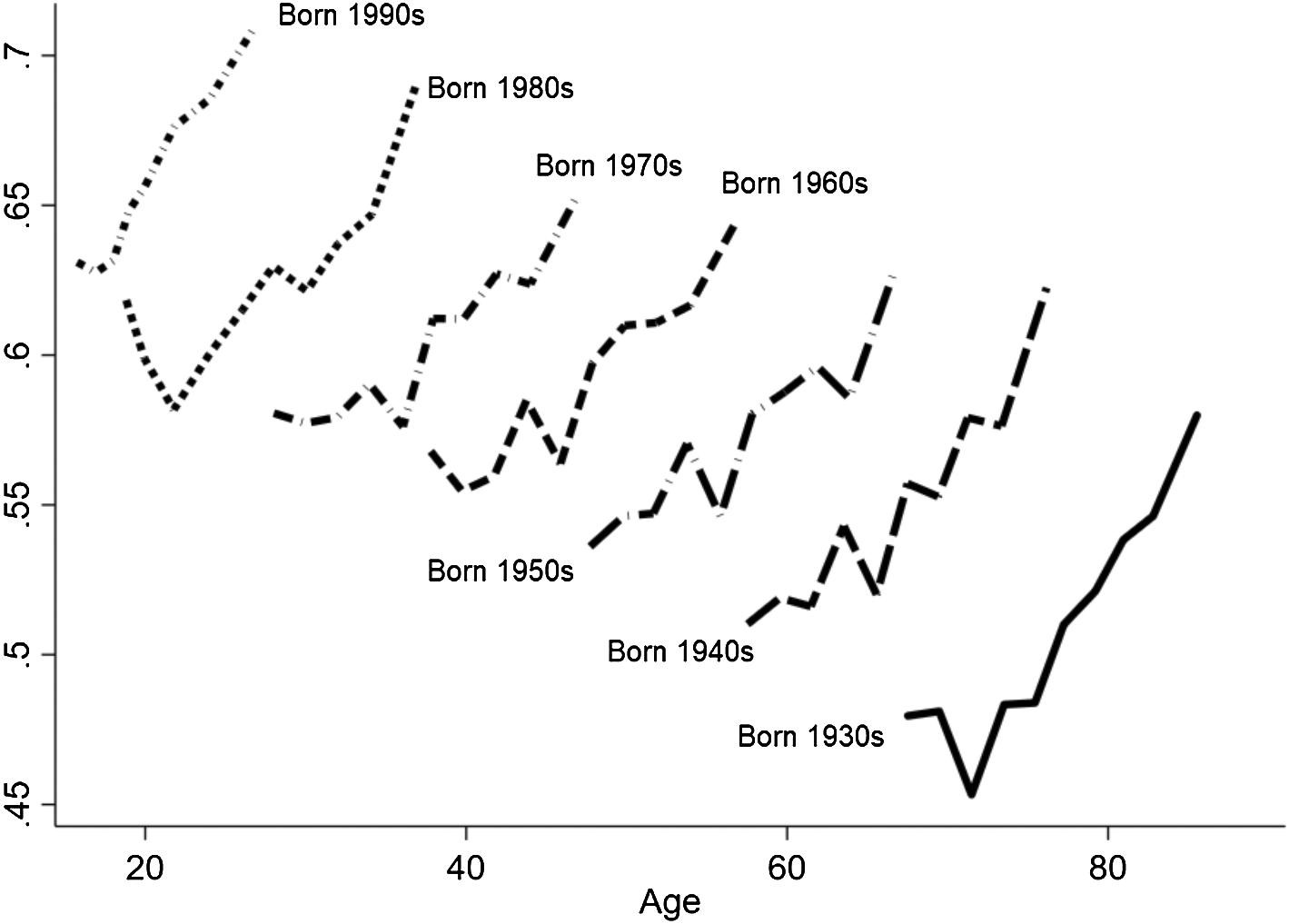This article originally appeared in the Advantage Magazine of CAGE Research Centre.
by Sascha O. Becker and Sharun Mukand
In 1933, the Nazi party passed a law to ‘retire’ academics and other civil servants of Jewish descent from their positions. In the scramble to escape growing persecution, many academics of Jewish heritage turned to former colleagues for help.
When the Nazi regime came to power in 1933, the flourishing academic culture established in Germany came to a sudden halt. Jewish academics were targeted through demonstrations, class boycotts and sporadic violence. Mass dismissal of Jews (defined by the Nazis as individuals with at least one Jewish grandparent) from academic positions began in 1933. By 1939 virtually all Jewish academics had lost their jobs.
Growing persecution and the threat of deportation to camps left many Jewish academics rushing to escape the country. But successful emigration was not a foregone conclusion. Jobs outside Germany were scarce after the Great Depression and anti-Semitism was rife. The majority of Jewish academics did successfully flee Germany to positions in other countries. But how did they do it?
The case of Richard Courant gives us some insight. Courant was a world-leading mathematician at the University of Göttingen. He emigrated to Cambridge in 1933 before moving to New York University the year after. Courant received letters ‘by the dozens’ asking for help from mathematicians seeking to flee Germany. Figure 1 shows how he supported some of his former colleagues in finding work in the US.

The case of Richard Courant suggests that professional networks could be highly successful in helping academics to find work outside Germany. But Courant’s success in securing positions for his colleagues may also have been due to his world-renown.
Did professional networks play a role in enabling other academics to escape? To understand how networks enabled escape from Nazi Germany, we compiled a list of all 1370 dismissed Jewish academics. We used the List of Displaced German Scholars alongside university-specific data and subject-specific studies. We then constructed detailed biographies and career paths for each academic using archival and digital resources. From there we were able to set out the professional networks of each academic.
We considered academics who had worked together between the years 1929 and 1933 to be part of a network. We specifically looked at the years before the dismissals began, so that the networks studied were genuine professional connections rather than associations created for the specific purpose of escape.
The dismissal of Jewish academics took place over a number of years. At first, individuals who had fought in the First World War, had lost a father or son in the war or had worked for the civil service since 1914 were exempt from dismissal. In 1935 these exemptions were revoked. The two-stage nature of the dismissal of Jewish academics allows us to consider the impact of early émigrés (those who had been dismissed and had emigrated by 1935) on the emigration decisions of colleagues who were still in Germany in 1935.
We find that those academics who had links to early émigrés were more likely to emigrate themselves. Academics with ten or more ties to early émigrés were five percentage points more likely to emigrate by 1939. Our findings control for variables which could impact the likelihood of emigration including family, languages spoken and academic seniority.
Academics with links to early émigrés were also more likely to move to the location in which the early émigré had settled. This suggests that émigrés were able to use their knowledge and influence in their new location to support their colleagues to move.
There is evidence to suggest that early émigrés only affected the emigration decisions of those who had not left Germany by 1935, indicating that émigrés had to be settled into a new location before they could effectively support others to escape.
We find that professional network ties were much stronger and more effective if the connection was recent and local. Academics with ten or more ties to recent colleagues (those they had worked with in either 1932 or 1933) were eight percentage points more likely to emigrate. Older connections were less likely to facilitate emigration.
We found similar trends for geographical proximity. Academics with ten or more ties to early émigrés who had worked at the same department were six percentage points more likely to emigrate. Academics with ties to émigrés who taught the same subject at a different university in the town were five percentage points more likely to emigrate.
This finding is surprising given the life-or-death implications of emigrating during this period. It suggests that the strength of networks can decay over time and space, something that has not been observed before.
Among the cohort of academics who emigrated, none of them made use of community networks to leave the country. This is in contrast to low-skilled migrants, who have been found in previous studies of migration to rely on community and family networks.
Academic emigration was much higher than for ordinary Jews. Most academics were able to leave the country safely, but by 1945 only 51% of the general Jewish population had left Germany. Professional networks were therefore potentially significant for high-skilled workers in opening up opportunities for escape that were not available to everyone.
Our findings suggest that even short-term interruptions to or surges of high-skilled migration can have long-term implications for the flow of high-skilled workers to a country. Policymakers should consider this when designing immigration policy for high-skilled workers.
About the authors
Sascha O. Becker is Xiaokai Yang Chair of Business and Economics at Monash University, part-time Professor at the University of Warwick, and a Project Leader at RFBerlin.
Sharun Mukand is Professor at the University of Warwick.
Publication details
Becker, S., Mukand, S., Lindenthal, V., Waldinger, F. “Persecution and escape: Professional networks and high-skilled emmigration from Nazi Germany.” American Economic Journal: Applied Economics (Forthcoming).




